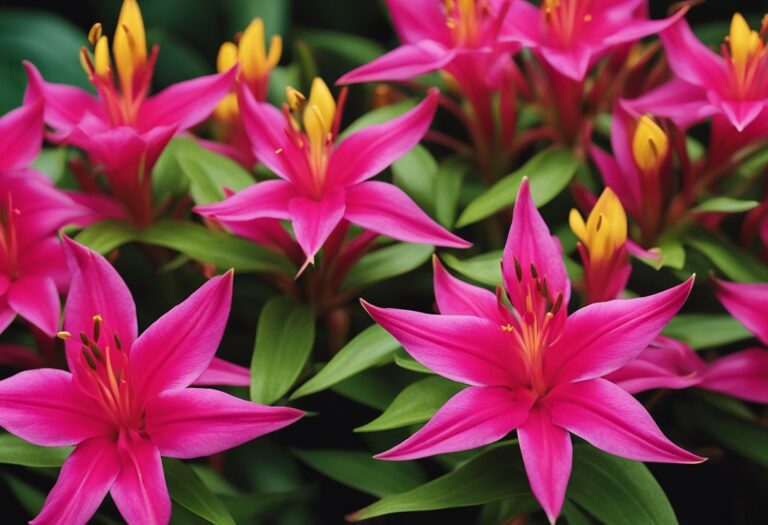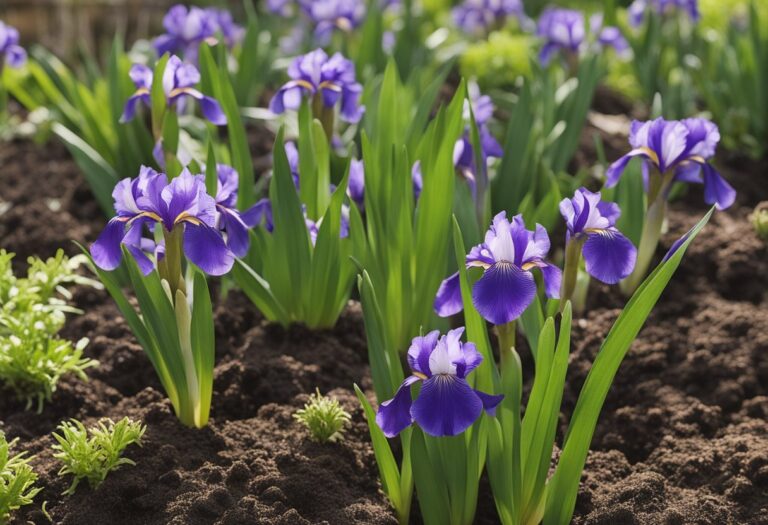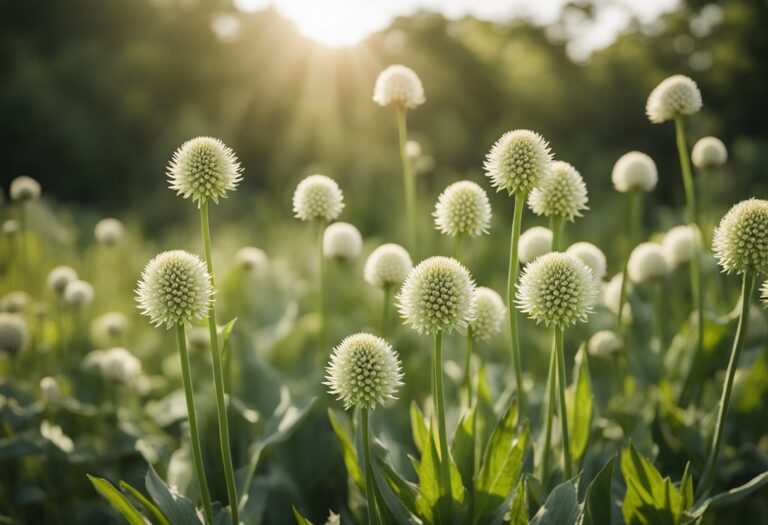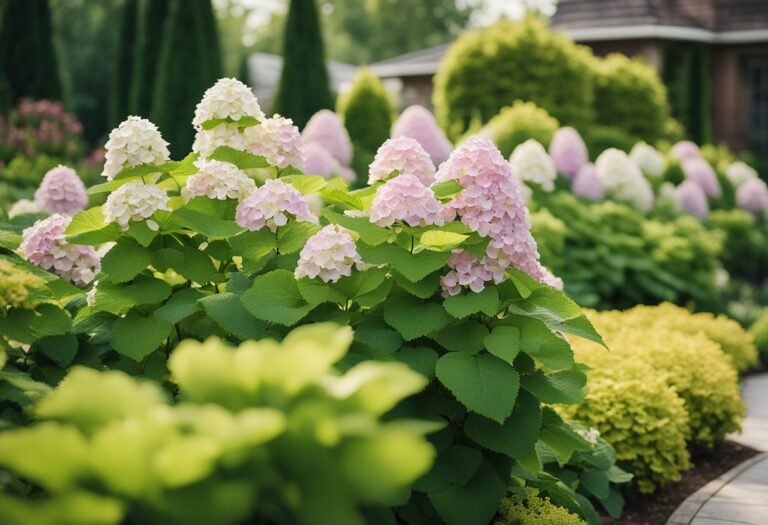Classification and Botany
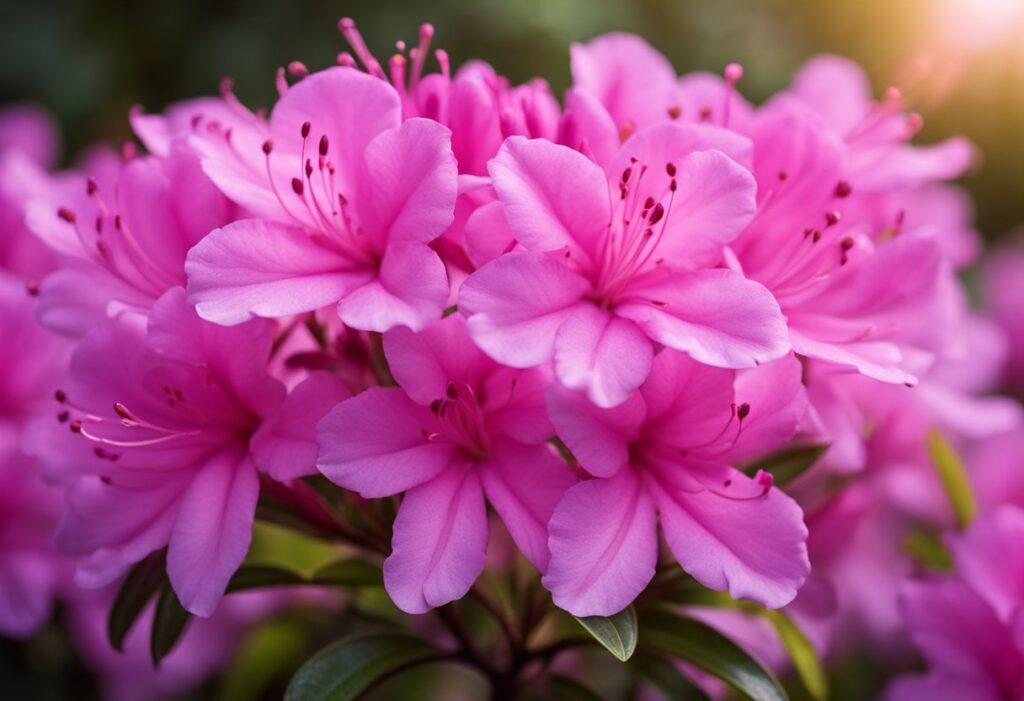
The Formosa Azalea Indica is a highly regarded species known for its vibrant flowers and versatility in landscaping. This plant falls within a complex classification system and is part of a larger family distinctive for its diverse genus.
Scientific Nomenclature
The Formosa Azalea is scientifically named Rhododendron indicum ‘Formosa’. This naming follows the binomial system, where Rhododendron is the genus and indicum is the species. The ‘Formosa’ is a cultivar name indicating a specific, cultivated variety within the species.
Plant Family and Genus
- Family: Ericaceae
- The Azalea belongs to the Ericaceae family, which is also known as the heath or heather family.
- Genus: Rhododendron
- Within this family, it is part of the genus Rhododendron, known for both evergreen and deciduous shrubs including azaleas.
- Key Genus Characteristics:
- Flowering: Typically bloom in spring
- Leaves: Range from thin and delicate to thick and leathery
- Habitat: Predominantly found in Asia, with a high concentration in East Asia and the Himalayas; also widespread in North America.
Your understanding of the Formosa Azalea’s placement within the botanical hierarchy is crucial for comprehending its cultivation needs and optimal care practices.
Cultivation and Care

Mastering the cultivation and care of Formosa Azalea Indica ensures lush blooms and vigorous health. Your success relies on providing optimal environmental conditions, proper soil and fertilization, and regular pruning and maintenance.
Environmental Requirements
Your Formosa Azalea Indica thrives in an environment with dappled sunlight or partial shade, requiring at least 4 to 6 hours of sunlight daily. These conditions mirror its natural understory habitat, protecting it from the intense midday heat which can cause stress.
Soil and Fertilization
Soil is crucial for your azalea’s well-being. It should be:
- Well-drained
- Acidic with a pH level between 4.5 to 5.5
Amend the planting site with peat moss or compost to enhance soil structure and nutrient content. You may fertilize with products specifically formulated for azaleas, typically applied in early spring.
Pruning and Maintenance
Prune your Formosa Azalea Indica soon after blooming to encourage bushiness and remove any dead or diseased branches. Regular maintenance also includes:
- Mulching to retain soil moisture and regulate temperature
- Watering to maintain moist but not waterlogged soil, especially during dry spells
Propagation Methods
Formosa Azalea Indica, known for its beautiful, large blooms, can be propagated using two main approaches to establish new plants.
Seed Sowing
To propagate your Formosa Azalea by seed:
- Collect seeds after the flowers have faded and the seed pods have matured.
- Prepare a seed tray with a well-draining mix, typically a combination of peat, perlite, and sand.
- Sow the seeds thinly and cover them with a light layer of the substrate.
- Maintain consistent moisture and warmth, avoiding direct sunlight until germination.
Cuttings
For propagation from cuttings:
- Select healthy stems from the current year’s growth and cut a 4-6 inch length just below a node.
- Prepare the cutting by removing leaves from the bottom third and flower buds to redirect energy to root development.
- Use rooting hormone by dipping the end of the cutting before planting to enhance root growth.
- Insert the cutting into a mixture of peat and perlite, ensuring at least two nodes are buried.
- Maintain a humid environment by covering with plastic and place in indirect sunlight until roots are established.
Bloom Characteristics
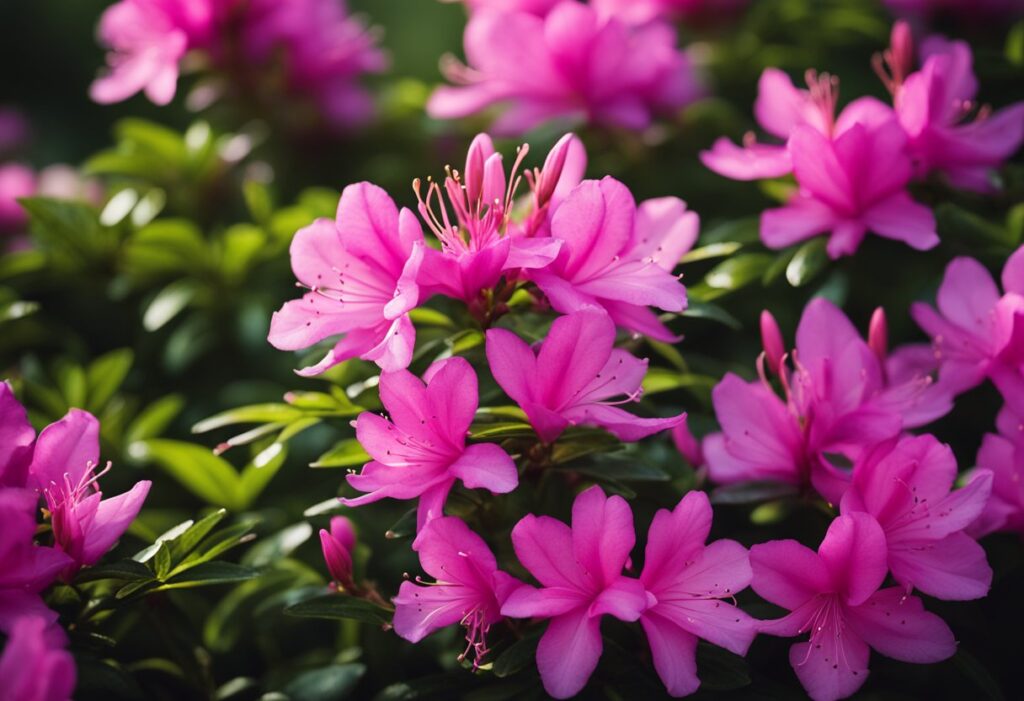
With their vibrant display and seasonal charm, your Formosa Azalea’s flowers are a standout feature. Understanding their bloom aspects will enhance your appreciation and care for these botanical beauties.
Flower Description
Color and Shape: Your Formosa Azalea produces large, funnel-shaped blossoms characterized by a dazzling magenta hue. Each bloom typically exhibits a darker accent blotch, adding to the flower’s visual appeal.
Size: The flowers are substantial, averaging about 3 inches across, which helps create a dense floral canopy.
Blooming Season
Spring Display: You can expect a profusion of blooms in the spring, which is the primary flowering period for your Formosa Azalea.
Fall Reblooming: In certain climates, a secondary blooming may occur in the fall, providing additional seasonal interest.
Landscape Uses and Symbolism
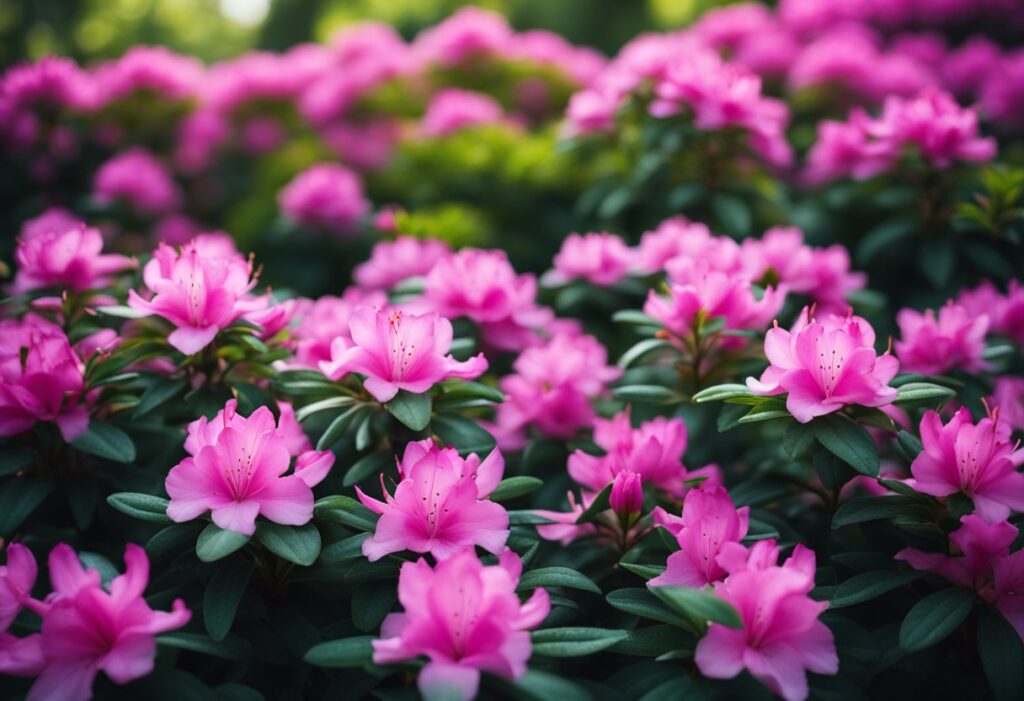
The Formosa Azalea Indica is a stunning addition to your landscape, valued for its vibrant blooms and evergreen foliage. When integrating this plant into your garden, consider its full potential size—often reaching up to 8 feet—and its preference for well-drained, highly acidic soil.
Planting & Design:
- Accent: Use as a focal point in your garden due to its eye-catching, springtime flowers.
- Mass Planting: Group together for a lush, colorful display that can create a natural privacy screen.
- Borders: Ideal for defining garden spaces with their dense growth and dramatic floral presence.
Care & Maintenance:
- Pruning: Lightly prune to maintain shape and encourage bushier growth.
- Fertilizing: Apply a general-purpose or acid-loving plant fertilizer post-bloom to promote health and growth.
Symbolism:
- The Formosa Azalea represents temperance and elegance in your garden setting.
- Cultural Significance: In some cultures, azaleas are a symbol of femininity and softness, fitting given their delicate flowers.
Attracting Wildlife:
- Your Formosa Azaleas can attract hummingbirds and butterflies, adding another layer of life and movement to your garden vista.
Frequently Asked Questions
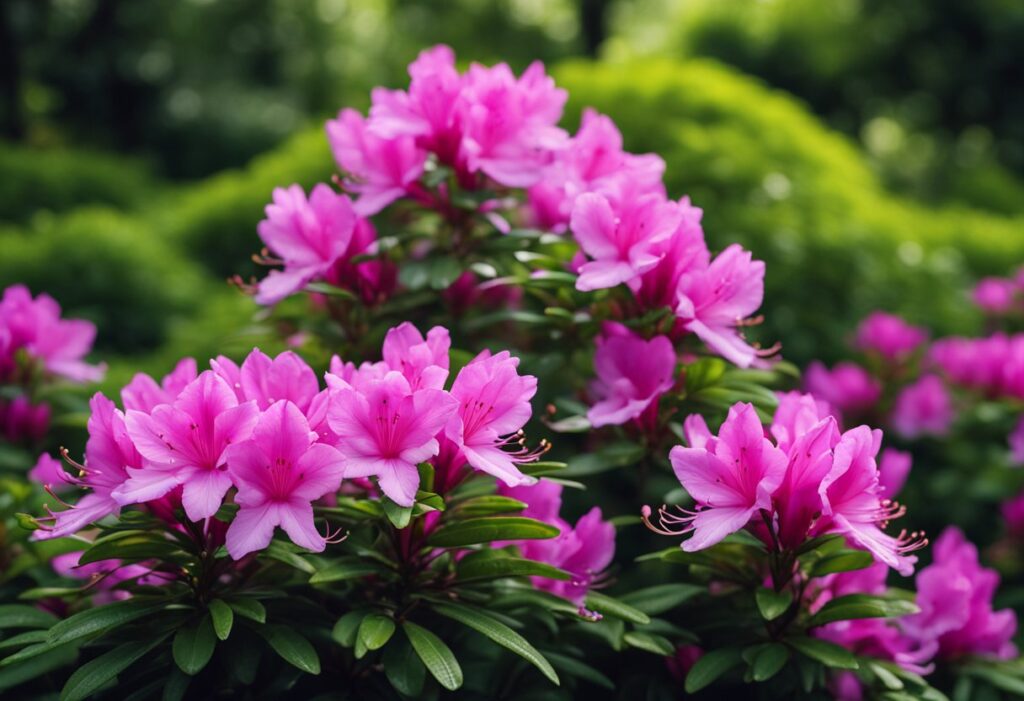
Your Formosa Azalea is a stunning choice for vibrant garden color. Here are answers to common questions to help you cultivate these beautiful shrubs.
What colors are available for Formosa Azaleas?
Formosa Azaleas are known for their array of colors, including pinks, purples, reds, and whites, often with speckles in the flower throats.
How do you plant and grow Formosa Azalea seeds?
To grow Formosa Azalea from seeds, plant them in well-draining soil, keep them moist and provide them with partial shade until they are established.
What is the typical size of a mature Formosa Azalea plant?
A mature Formosa Azalea can become a robust shrub, generally reaching sizes up to 6-8 feet tall and 4-6 feet wide.
Where can I find Formosa Azalea plants for sale?
Formosa Azalea plants can be purchased at plant nurseries, garden centers, and from online retailers specializing in garden and landscape plants.
What are the care requirements for a Formosa Azalea?
Care requirements for Formosa Azaleas include well-drained soil, appropriate sunlight, regular watering, annual pruning, and fertilization with a balanced 10-10-10 formula.
When is the expected bloom time for Formosa Azaleas?
Formosa Azaleas typically bloom in the spring. Their flowering period extends from March to May. The specific timing depends on the local climate and weather conditions.







